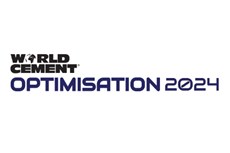Putting your best fuel forward
Published by David Bizley,
Editor
World Cement,
Lars Jennissen, N+P Group, describes the latest developments in waste derived alternative fuels and raw materials, and outlines how cement producers could utilise them to achieve higher thermal substitution rates.
During the course of 2021, N+P has been able to continue its ambitious growth and development plans, despite COVID-19 still having an effect on overall business. Earlier this year, N+P announced a new strategic partner, Mercuria Energy, who have partnered with the company to help grow its production capacities in Europe, and potentially outside of Europe as well. N+P’s growth plan is based around a growing demand for its wide portfolio of various quality alternative fuels. The company is also developing a number of new alternative raw material streams which have a potential usage in the cement industry. This article covers a number of specific developments in terms of alternative fuels and alternative raw materials.
N+P is not a traditional waste company, having instead developed into a bespoke fuel production company. This approach is somewhat unique in the waste market; N+P has a good understanding of the cement making process, but as the company does not collect waste itself, it can be selective in which waste streams it processes. In the last 10 years, many N+P employees have been trained by senior cement experts who have worked on various kiln types, used various fuels and who were actually involved in the first phases of alternative fuel consumption in Europe. This mindset combined with N+P’s knowledge on waste processing allows the company to continuously develop its fuels, specifically pelletised fuels, to try and set the standard for higher thermal substitution rates.
Achieving a 100% waste-derived flame
The company has focused its developments on offering smaller particle sizes for solid recovered fuel, mainly for main burner applications, with the view to try and achieve a stable 100% waste derived flame without support from fossil sources or liquid fuels like solvents. Obviously, the topic of particle size reduction has been discussed in many articles and conferences, but there does not seem to be an overall solution which ticks all of the boxes. Trying to reduce solid recovered fuel is a costly and difficult operation, certainly if you wish to obtain physical parameters similar to pulverised coal or lignite. Typically, the kilns which are able to achieve very high levels of substitution on the main burner will at some point struggle to keep their flame and process parameters in the right condition if only ‘traditional’ SRF is used, where a particle size of 20 to 30 mm is quite common, and harder pieces of plastics at that size tend to become more problematic. As well as this, not everyone will have the luxury of accessing dry infeed materials sourced from the market, or the ability to dry the material at the cement kiln. Investing in specific equipment to change the properties of SRF or pelletised fuel like N+P’s Subcoal®, is also not an easy route to develop.
With these constraints and challenges in mind, N+P took on the challenge to further improve the standard Subcoal pellet with two key aims. The first aim was to try and reduce the particle size of the milled fuel to get as close to a pulverised quality as possible. The second aim was to improve and sustain good flowability properties of the pulverised product. Everyone with experience in shredding and milling of pulverising waste derived fuel will know that trying to reduce an SRF to a powder will result in a very woolly product, which will be virtually impossible to transport (let alone distribute) in traditional fossil fuel feed systems, or in typical SRF feed systems. A pelletised fuel tends to be easier to mill down to smaller particle sizes, thanks to the higher density compared to SRF. However, even with a standard pellet, the resulting material after milling tends to be very woolly, so these types of applications would only work with a mill used directly before the burner. There are examples of cement kilns doing this and achieving 85% substitution on the main burner, but it is rare for cement kilns to have access to this type of equipment.
Found this article interesting? You can read the full version in the December issue of World Cement.
To register for a free trial, click here!
Read the article online at: https://www.worldcement.com/special-reports/01122021/putting-your-best-fuel-forward/
You might also like
Rohrdorfer starts ethylene production from carbon dioxide
Following a test phase, production is to be scaled up to an industrial scale, thereby establishing a seamless CO2 circular economy.


